Deck 5: Analyzing Graphs of Functions
Question
Question
Question
Question
Question
Question
Question
Question
Question
Question
Question
Question
Question
Question
Question
Question
Question
Question
Question
Question
Question
Question
Question
Question
Question
Question
Question
Question
Question
Question
Question
Question
Question
Question
Question
Question
Question
Question
Question
Question
Question
Question
Question
Question
Question
Question
Question
Question
Question
Question
Question
Question
Question
Question
Question
Question

Unlock Deck
Sign up to unlock the cards in this deck!
Unlock Deck
Unlock Deck
1/56
Play
Full screen (f)
Deck 5: Analyzing Graphs of Functions
1
Select the graph of the function and determine whether it is even,odd,or neither.? ?
A)?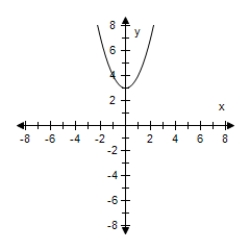 Even
Even
B)?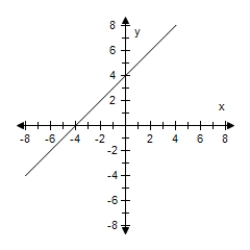 Odd
Odd
C)?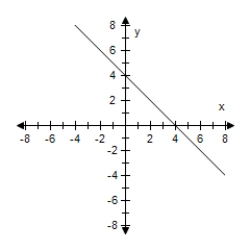 Odd
Odd
D)?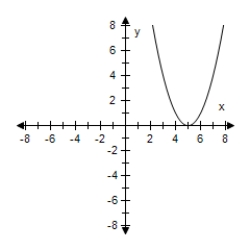 Even
Even
E)?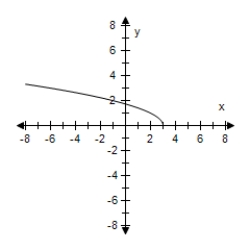 Neither
Neither
A)?
 Even
EvenB)?
 Odd
OddC)?
 Odd
OddD)?
 Even
EvenE)?
 Neither
Neither?  Neither
Neither
 Neither
Neither 2
Select the graph of the function and find the zeros of the function.? ?
A)?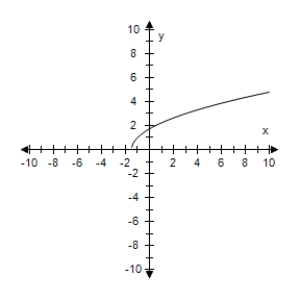
B)?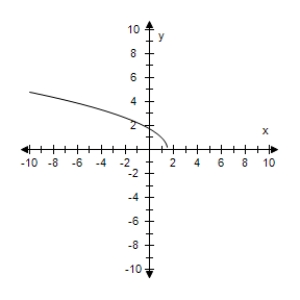
C)?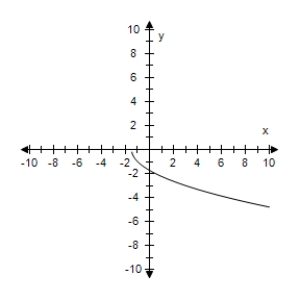
D)?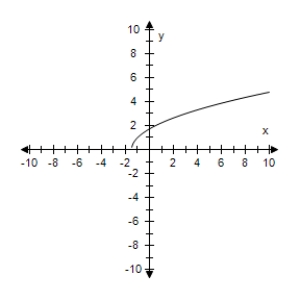
E)?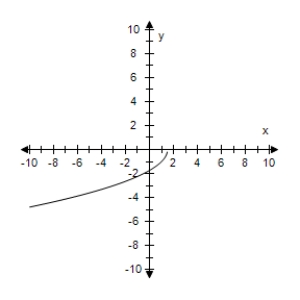
A)?

B)?

C)?

D)?

E)?

? 

3
?Find the zeros of the function algebraically.? ?
A)?
B)?
C)?
D)?
E)?
A)?
B)?
C)?
D)?
E)?
?
4
Select the graph of the function and determine whether it is even,odd,or neither.
F(x)= 6x - 5
A)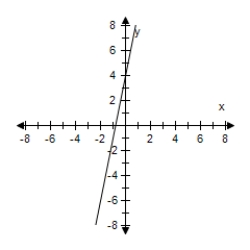 Even
Even
B)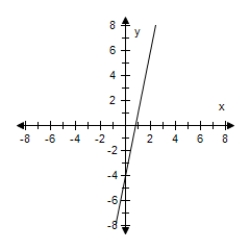 Even
Even
C)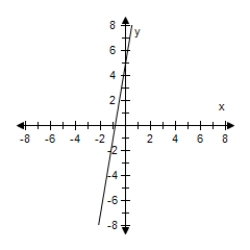 Odd
Odd
D)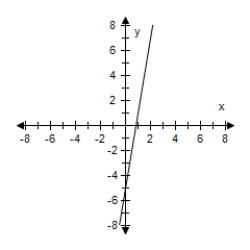 Neither
Neither
E)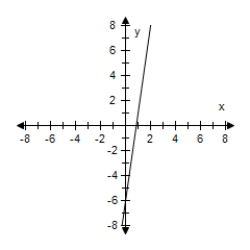 Odd
Odd
F(x)= 6x - 5
A)
 Even
EvenB)
 Even
EvenC)
 Odd
OddD)
 Neither
NeitherE)
 Odd
Odd
Unlock Deck
Unlock for access to all 56 flashcards in this deck.
Unlock Deck
k this deck
5
Find the zeros of the function algebraically.? ?
A)x = 5
B)x = 10
C)x = 9
D)x = 8
E)x = 0
A)x = 5
B)x = 10
C)x = 9
D)x = 8
E)x = 0

Unlock Deck
Unlock for access to all 56 flashcards in this deck.
Unlock Deck
k this deck
6
Find the zeros of the function algebraically.? ?
A)
B)
C)?
D)
E)
A)
B)
C)?
D)
E)

Unlock Deck
Unlock for access to all 56 flashcards in this deck.
Unlock Deck
k this deck
7
Find the average rate of change of the function from x1 = 1 to x2 = 5.? ?
A)The average rate of change from x1 = 1 to x2 = 5 is 24.
B)The average rate of change from x1 = 1 to x2 = 5 is -4.
C)The average rate of change from x1 = 1 to x2 = 5 is -24.
D)The average rate of change from x1 = 1 to x2 = 5 is -18.
E)The average rate of change from x1 = 1 to x2 = 5 is 4.
A)The average rate of change from x1 = 1 to x2 = 5 is 24.
B)The average rate of change from x1 = 1 to x2 = 5 is -4.
C)The average rate of change from x1 = 1 to x2 = 5 is -24.
D)The average rate of change from x1 = 1 to x2 = 5 is -18.
E)The average rate of change from x1 = 1 to x2 = 5 is 4.

Unlock Deck
Unlock for access to all 56 flashcards in this deck.
Unlock Deck
k this deck
8
?Find the zeros of the function algebraically.??
A)?
B)?
C)?
D)?
E)?
A)?
B)?
C)?
D)?
E)?

Unlock Deck
Unlock for access to all 56 flashcards in this deck.
Unlock Deck
k this deck
9
Select the graph of the function and determine whether it is even,odd,or neither.
F(x)= x2 - 6
A) Odd
Odd
B)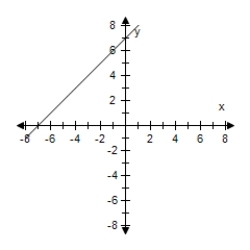 Neither
Neither
C)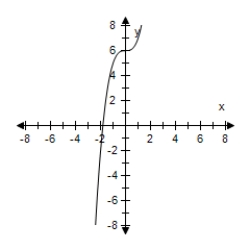 Odd
Odd
D) Neither
Neither
E) Even
Even
F(x)= x2 - 6
A)
 Odd
OddB)
 Neither
NeitherC)
 Odd
OddD)
 Neither
NeitherE)
 Even
Even
Unlock Deck
Unlock for access to all 56 flashcards in this deck.
Unlock Deck
k this deck
10
Find the average rate of change of the function from x1 = 1 to x2 = 5.? ?
A)The average rate of change from x1 = 1 to x2 = 5 is 19.
B)The average rate of change from x1 = 1 to x2 = 5 is 3.
C)The average rate of change from x1 = 1 to x2 = 5 is -6.
D)The average rate of change from x1 = 1 to x2 = 5 is -3.
E)The average rate of change from x1 = 1 to x2 = 5 is 6.
A)The average rate of change from x1 = 1 to x2 = 5 is 19.
B)The average rate of change from x1 = 1 to x2 = 5 is 3.
C)The average rate of change from x1 = 1 to x2 = 5 is -6.
D)The average rate of change from x1 = 1 to x2 = 5 is -3.
E)The average rate of change from x1 = 1 to x2 = 5 is 6.

Unlock Deck
Unlock for access to all 56 flashcards in this deck.
Unlock Deck
k this deck
11
Find the average rate of change of the function from x1 = 0 to x2 = 3.? ?
A)The average rate of change from x1 = 0 to x2 = 3 is -2.
B)The average rate of change from x1 = 0 to x2 = 3 is 12.
C)The average rate of change from x1 = 0 to x2 = 3 is 2.
D)The average rate of change from x1 = 0 to x2 = 3 is -12.
E)The average rate of change from x1 = 0 to x2 = 3 is 19.
A)The average rate of change from x1 = 0 to x2 = 3 is -2.
B)The average rate of change from x1 = 0 to x2 = 3 is 12.
C)The average rate of change from x1 = 0 to x2 = 3 is 2.
D)The average rate of change from x1 = 0 to x2 = 3 is -12.
E)The average rate of change from x1 = 0 to x2 = 3 is 19.

Unlock Deck
Unlock for access to all 56 flashcards in this deck.
Unlock Deck
k this deck
12
Find the average rate of change of the function from x1 = 1 to x2 = 3.? ?
A)The average rate of change from x1 = 1 to x2 = 3 is 19.
B)The average rate of change from x1 = 1 to x2 = 3 is -20.
C)The average rate of change from x1 = 1 to x2 = 3 is 8.
D)The average rate of change from x1 = 1 to x2 = 3 is -14.
E)The average rate of change from x1 = 1 to x2 = 3 is 14.
A)The average rate of change from x1 = 1 to x2 = 3 is 19.
B)The average rate of change from x1 = 1 to x2 = 3 is -20.
C)The average rate of change from x1 = 1 to x2 = 3 is 8.
D)The average rate of change from x1 = 1 to x2 = 3 is -14.
E)The average rate of change from x1 = 1 to x2 = 3 is 14.

Unlock Deck
Unlock for access to all 56 flashcards in this deck.
Unlock Deck
k this deck
13
Find the average rate of change of the function from x1 = 1 to x2 = 6.? ?
A)The average rate of change from x1 = 1 to x2 = 6 is 19.
B)The average rate of change from x1 = 1 to x2 = 6 is -9.
C)The average rate of change from x1 = 1 to x2 = 6 is 9.
D)The average rate of change from x1 = 1 to x2 = 6 is -28.
E)The average rate of change from x1 = 1 to x2 = 6 is -2.
A)The average rate of change from x1 = 1 to x2 = 6 is 19.
B)The average rate of change from x1 = 1 to x2 = 6 is -9.
C)The average rate of change from x1 = 1 to x2 = 6 is 9.
D)The average rate of change from x1 = 1 to x2 = 6 is -28.
E)The average rate of change from x1 = 1 to x2 = 6 is -2.

Unlock Deck
Unlock for access to all 56 flashcards in this deck.
Unlock Deck
k this deck
14
Find the average rate of change of the function from x1 = 0 to x2 = 3.? ?
A)The average rate of change from x1 = 0 to x2 = 3 is -3.
B)The average rate of change from x1 = 0 to x2 = 3 is 3.
C)The average rate of change from x1 = 0 to x2 = 3 is -10.
D)The average rate of change from ?x1 = 0 to x2 = 3 is 10.
E)The average rate of change from x1 = 0 to x2 = 3 is 19.
A)The average rate of change from x1 = 0 to x2 = 3 is -3.
B)The average rate of change from x1 = 0 to x2 = 3 is 3.
C)The average rate of change from x1 = 0 to x2 = 3 is -10.
D)The average rate of change from ?x1 = 0 to x2 = 3 is 10.
E)The average rate of change from x1 = 0 to x2 = 3 is 19.

Unlock Deck
Unlock for access to all 56 flashcards in this deck.
Unlock Deck
k this deck
15
Select the graph of the function and determine whether it is even,odd,or neither.
F(x)= 4
A)Neither 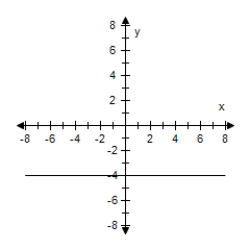
B)Odd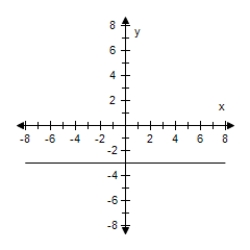
C)Even 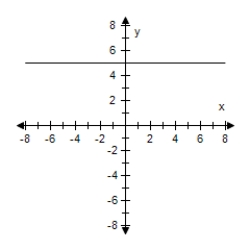
D)Even 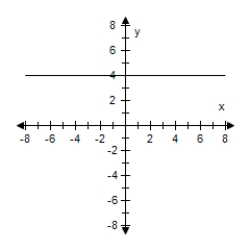
E)Odd 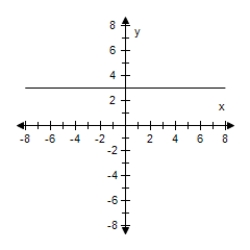
F(x)= 4
A)Neither

B)Odd

C)Even

D)Even

E)Odd


Unlock Deck
Unlock for access to all 56 flashcards in this deck.
Unlock Deck
k this deck
16
Select the graph of the function and find the zeros of the function.? ?
A)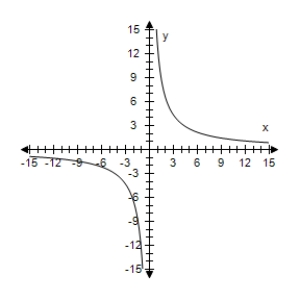 ?
?
B)?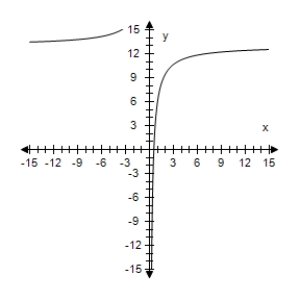
C)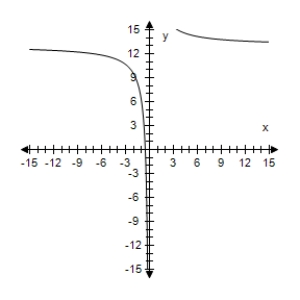 ?
?
D)?
E)?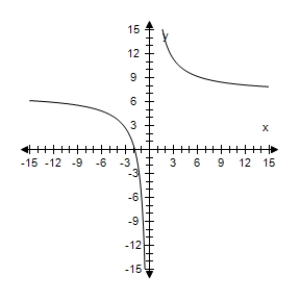
A)
 ?
? B)?

C)
 ?
? D)?

E)?


Unlock Deck
Unlock for access to all 56 flashcards in this deck.
Unlock Deck
k this deck
17
Find the zeros of the function algebraically.? ?
A)x = 0,16
B)
C)
D)
E)
A)x = 0,16
B)
C)
D)
E)

Unlock Deck
Unlock for access to all 56 flashcards in this deck.
Unlock Deck
k this deck
18
Find the zeros of the function algebraically.? ?
A)
B)
C)
D)
E)
A)
B)
C)
D)
E)

Unlock Deck
Unlock for access to all 56 flashcards in this deck.
Unlock Deck
k this deck
19
Select the graph of the function and find the zeros of the function.? ?
A)?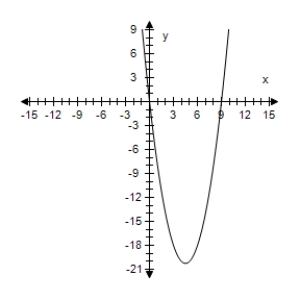 ?x = 0,9
?x = 0,9
B)?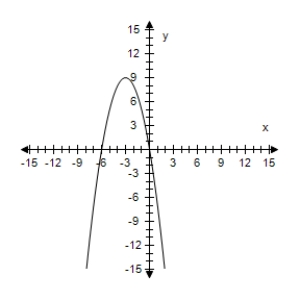 ?x = -6,0
?x = -6,0
C)? ?x = -6,0
?x = -6,0
D)?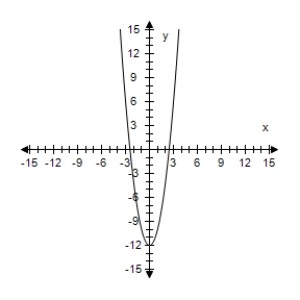 x = 6
x = 6
E)?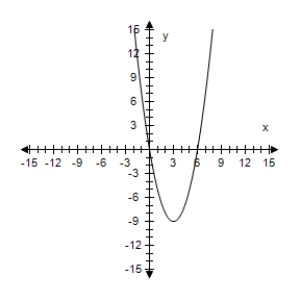 x = 0,6
x = 0,6
A)?
 ?x = 0,9
?x = 0,9B)?
 ?x = -6,0
?x = -6,0C)?
 ?x = -6,0
?x = -6,0D)?
 x = 6
x = 6E)?
 x = 0,6
x = 0,6
Unlock Deck
Unlock for access to all 56 flashcards in this deck.
Unlock Deck
k this deck
20
?Find the zeros of the function algebraically.??
A)?
B)?
C)?
D)?
E)?
A)?
B)?
C)?
D)?
E)?

Unlock Deck
Unlock for access to all 56 flashcards in this deck.
Unlock Deck
k this deck
21
Find the coordinates of a second point on the graph of a function f if the given point is on the graph and the function is odd.
(8,-7)
A)(8,7)
B)(8,-7)
C)(-8,-7)
D)(-8,7)
E)None of the above
(8,-7)
A)(8,7)
B)(8,-7)
C)(-8,-7)
D)(-8,7)
E)None of the above

Unlock Deck
Unlock for access to all 56 flashcards in this deck.
Unlock Deck
k this deck
22
Use the Vertical Line Test to determine in which of the graphs y is not a function of x. ?
A)All of the choices (A,B,C,and D)represent functions.
B)?x2 + y2 = 16 ?
?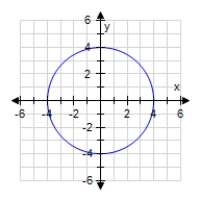
C)? ?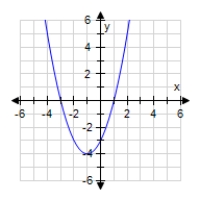
D)? ?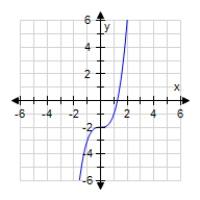
E)? ?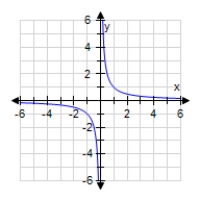
A)All of the choices (A,B,C,and D)represent functions.
B)?x2 + y2 = 16 ?
?

C)? ?

D)? ?

E)? ?


Unlock Deck
Unlock for access to all 56 flashcards in this deck.
Unlock Deck
k this deck
23
Find the coordinates of a second point on the graph of a function f if the given point is on the graph and the function is odd.
(4a,6b)
A)(-4a,-6b)
B)(-4a,6b)
C)(4a,-6b)
D)(4a,6b)
E)None of the above
(4a,6b)
A)(-4a,-6b)
B)(-4a,6b)
C)(4a,-6b)
D)(4a,6b)
E)None of the above

Unlock Deck
Unlock for access to all 56 flashcards in this deck.
Unlock Deck
k this deck
24
Find the zeroes of the functions algebraically.? ?
A)
B)
C)?
D)
E)
A)
B)
C)?
D)
E)

Unlock Deck
Unlock for access to all 56 flashcards in this deck.
Unlock Deck
k this deck
25
An object is thrown upward from ground level at a velocity of 90 feet per second. Use the position equation s = -16t2 + v0t + s0 to select a function that represents the situation and select the graph of the function.
A)s = -16t2 + 90t
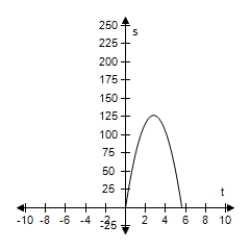
B)s = -16t2 - 90t 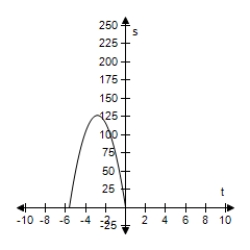
C)s = 16t2 + 90t
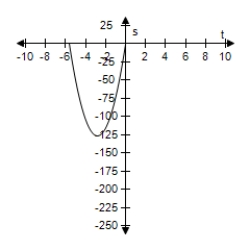
D)s = 16t2 - 90t
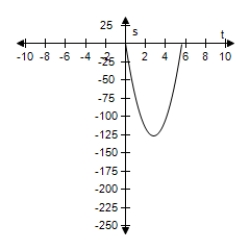
E)s = -16t2 + 90t + 8
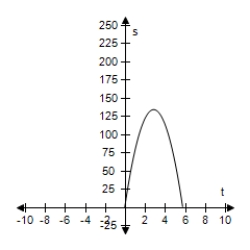
A)s = -16t2 + 90t

B)s = -16t2 - 90t

C)s = 16t2 + 90t

D)s = 16t2 - 90t

E)s = -16t2 + 90t + 8


Unlock Deck
Unlock for access to all 56 flashcards in this deck.
Unlock Deck
k this deck
26
Find the coordinates of a second point on the graph of a function f if the given point is on the graph and the function is even.
(4,3)
A)(-4,-3)
B)(-4,3)
C)(4,3)
D)(4,-3)
E)None of the above
(4,3)
A)(-4,-3)
B)(-4,3)
C)(4,3)
D)(4,-3)
E)None of the above

Unlock Deck
Unlock for access to all 56 flashcards in this deck.
Unlock Deck
k this deck
27
Select the graph of the given function and determine the interval(s)for which f(x)≥ 0.
F(x)= 5 - x
A)![<strong>Select the graph of the given function and determine the interval(s)for which f(x)≥ 0. F(x)= 5 - x </strong> A) (∞,-5] B) (-∞,-5] C) (∞,5] D) (-∞,5] E) (-∞,5]](https://d2lvgg3v3hfg70.cloudfront.net/TB4590/11ea99db_b714_26e2_94ac_1d24b78adf72_TB4590_00.jpg)
(∞,-5]
B)![<strong>Select the graph of the given function and determine the interval(s)for which f(x)≥ 0. F(x)= 5 - x </strong> A) (∞,-5] B) (-∞,-5] C) (∞,5] D) (-∞,5] E) (-∞,5]](https://d2lvgg3v3hfg70.cloudfront.net/TB4590/11ea99db_b714_4df3_94ac_a7f495cfee30_TB4590_00.jpg)
(-∞,-5]
C)![<strong>Select the graph of the given function and determine the interval(s)for which f(x)≥ 0. F(x)= 5 - x </strong> A) (∞,-5] B) (-∞,-5] C) (∞,5] D) (-∞,5] E) (-∞,5]](https://d2lvgg3v3hfg70.cloudfront.net/TB4590/11ea99db_b714_4df4_94ac_5d7486e8677c_TB4590_00.jpg)
(∞,5]
D)![<strong>Select the graph of the given function and determine the interval(s)for which f(x)≥ 0. F(x)= 5 - x </strong> A) (∞,-5] B) (-∞,-5] C) (∞,5] D) (-∞,5] E) (-∞,5]](https://d2lvgg3v3hfg70.cloudfront.net/TB4590/11ea99db_b714_7505_94ac_a17ba3728b2a_TB4590_00.jpg)
(-∞,5]
E)![<strong>Select the graph of the given function and determine the interval(s)for which f(x)≥ 0. F(x)= 5 - x </strong> A) (∞,-5] B) (-∞,-5] C) (∞,5] D) (-∞,5] E) (-∞,5]](https://d2lvgg3v3hfg70.cloudfront.net/TB4590/11ea99db_b714_7506_94ac_8982bd382f5c_TB4590_00.jpg)
(-∞,5]
F(x)= 5 - x
A)
![<strong>Select the graph of the given function and determine the interval(s)for which f(x)≥ 0. F(x)= 5 - x </strong> A) (∞,-5] B) (-∞,-5] C) (∞,5] D) (-∞,5] E) (-∞,5]](https://d2lvgg3v3hfg70.cloudfront.net/TB4590/11ea99db_b714_26e2_94ac_1d24b78adf72_TB4590_00.jpg)
(∞,-5]
B)
![<strong>Select the graph of the given function and determine the interval(s)for which f(x)≥ 0. F(x)= 5 - x </strong> A) (∞,-5] B) (-∞,-5] C) (∞,5] D) (-∞,5] E) (-∞,5]](https://d2lvgg3v3hfg70.cloudfront.net/TB4590/11ea99db_b714_4df3_94ac_a7f495cfee30_TB4590_00.jpg)
(-∞,-5]
C)
![<strong>Select the graph of the given function and determine the interval(s)for which f(x)≥ 0. F(x)= 5 - x </strong> A) (∞,-5] B) (-∞,-5] C) (∞,5] D) (-∞,5] E) (-∞,5]](https://d2lvgg3v3hfg70.cloudfront.net/TB4590/11ea99db_b714_4df4_94ac_5d7486e8677c_TB4590_00.jpg)
(∞,5]
D)
![<strong>Select the graph of the given function and determine the interval(s)for which f(x)≥ 0. F(x)= 5 - x </strong> A) (∞,-5] B) (-∞,-5] C) (∞,5] D) (-∞,5] E) (-∞,5]](https://d2lvgg3v3hfg70.cloudfront.net/TB4590/11ea99db_b714_7505_94ac_a17ba3728b2a_TB4590_00.jpg)
(-∞,5]
E)
![<strong>Select the graph of the given function and determine the interval(s)for which f(x)≥ 0. F(x)= 5 - x </strong> A) (∞,-5] B) (-∞,-5] C) (∞,5] D) (-∞,5] E) (-∞,5]](https://d2lvgg3v3hfg70.cloudfront.net/TB4590/11ea99db_b714_7506_94ac_8982bd382f5c_TB4590_00.jpg)
(-∞,5]

Unlock Deck
Unlock for access to all 56 flashcards in this deck.
Unlock Deck
k this deck
28
An object is dropped from a height of 60 feet. Use the position equation s = -16t2 + v0t + s0 to write a function that represents the situation and select the graph of the function.
A)s = 16t2 + 60
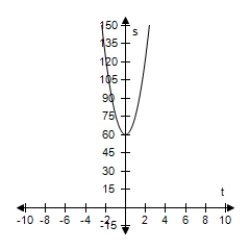
B)s = -16t2 - 60
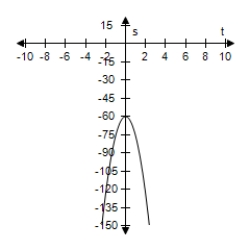
C)s = 16t2 - 60
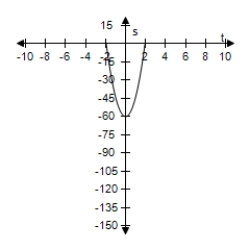
D)s = -16t2 + 60
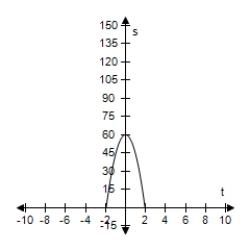
E)s = -16t2 + 60t
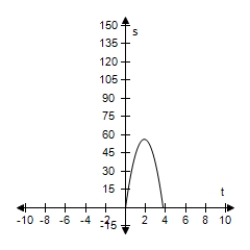
A)s = 16t2 + 60

B)s = -16t2 - 60

C)s = 16t2 - 60

D)s = -16t2 + 60

E)s = -16t2 + 60t


Unlock Deck
Unlock for access to all 56 flashcards in this deck.
Unlock Deck
k this deck
29
An object is thrown upward from a height of 6.4 feet at a velocity of 80 feet per second. Use the position equation s = -16t2 + v0t + s0 to select a function that represents the situation and select the graph of the function.
A)s = -16t2 + 80 - 6.4 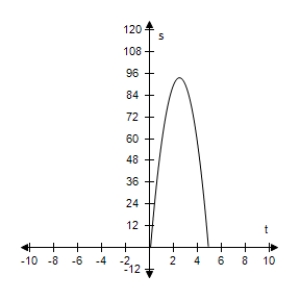
B)s = -16t2 + 80t
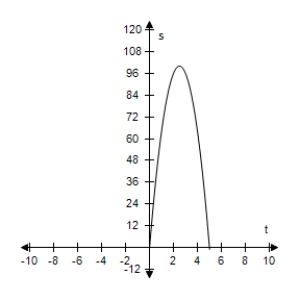
C)s = -16t2 - 80t - 6.4 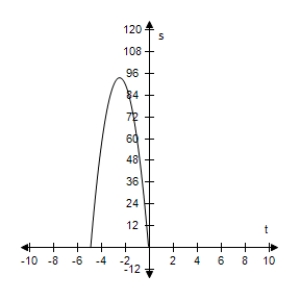
D)s = -16t2 - 80t + 6.4 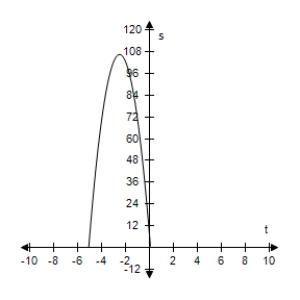
E)s = -16t2 + 80t + 6.4
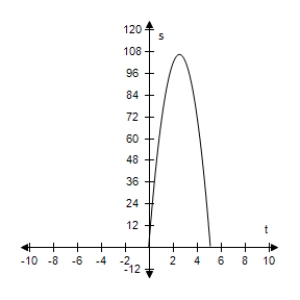
A)s = -16t2 + 80 - 6.4

B)s = -16t2 + 80t

C)s = -16t2 - 80t - 6.4

D)s = -16t2 - 80t + 6.4

E)s = -16t2 + 80t + 6.4


Unlock Deck
Unlock for access to all 56 flashcards in this deck.
Unlock Deck
k this deck
30
The number of lumens (time rate of flow of light)L from a fluorescent lamp can be approximated by the model
L = -0.294x2 + 97.744x - 664.875, 20 ≤ x ≤ 90
Where x is the wattage of the lamp.
Use a graphing utility to select the graph of the function.Use the graph to estimate the wattage necessary to obtain 2400 lumens.
A)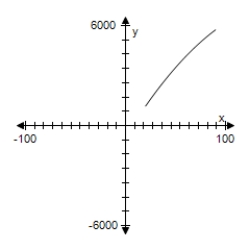 40W
40W
B) 30W
30W
C)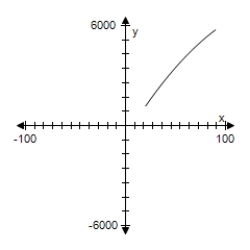 45W
45W
D)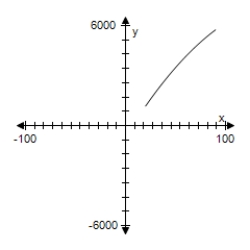 25W
25W
E)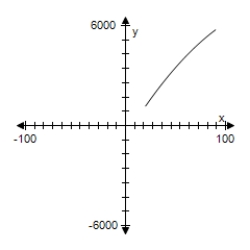 35W
35W
L = -0.294x2 + 97.744x - 664.875, 20 ≤ x ≤ 90
Where x is the wattage of the lamp.
Use a graphing utility to select the graph of the function.Use the graph to estimate the wattage necessary to obtain 2400 lumens.
A)
 40W
40WB)
 30W
30WC)
 45W
45WD)
 25W
25WE)
 35W
35W
Unlock Deck
Unlock for access to all 56 flashcards in this deck.
Unlock Deck
k this deck
31
Select the graph of the given function and determine the interval(s)for which f(x)? 0.? ?
A)?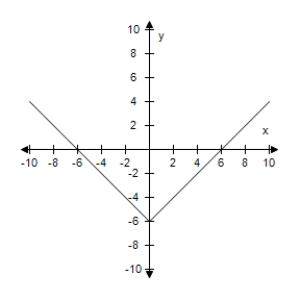 ?
?
F(x)> 6 for all x.
B)?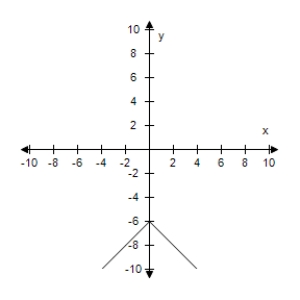 ?
?
F(x)< 0 for all x.
C)?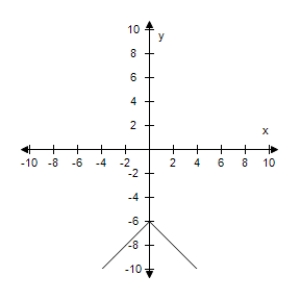 ?
?
F(x)? 0 for all x.
D)?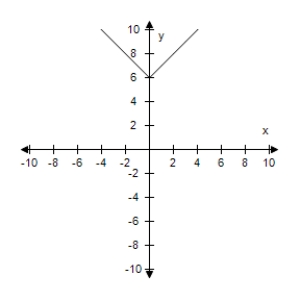 ?
?
F(x)? 0 for all x.
E)?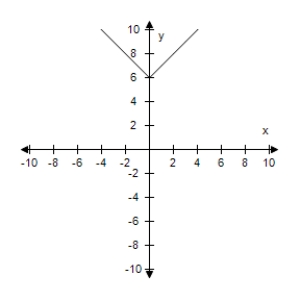 ?
?
F(x)> 0 for all x.
A)?
 ?
?F(x)> 6 for all x.
B)?
 ?
?F(x)< 0 for all x.
C)?
 ?
?F(x)? 0 for all x.
D)?
 ?
?F(x)? 0 for all x.
E)?
 ?
?F(x)> 0 for all x.

Unlock Deck
Unlock for access to all 56 flashcards in this deck.
Unlock Deck
k this deck
32
Select the graph of the function and determine whether it is even,odd,or neither.? ?
A)?![<strong>Select the graph of the function and determine whether it is even,odd,or neither.? g ( t ) = \sqrt [ 3 ] { t - 4 } ?</strong> A)? Even B)? Odd C)? Neither D)? Even E)? Odd](https://d2lvgg3v3hfg70.cloudfront.net/TB4590/11ea99db_b70e_f690_94ac_3ba935d00510_TB4590_00.jpg) Even
Even
B)?![<strong>Select the graph of the function and determine whether it is even,odd,or neither.? g ( t ) = \sqrt [ 3 ] { t - 4 } ?</strong> A)? Even B)? Odd C)? Neither D)? Even E)? Odd](https://d2lvgg3v3hfg70.cloudfront.net/TB4590/11ea99db_b70e_f691_94ac_dfb3f885846d_TB4590_00.jpg) Odd
Odd
C)?![<strong>Select the graph of the function and determine whether it is even,odd,or neither.? g ( t ) = \sqrt [ 3 ] { t - 4 } ?</strong> A)? Even B)? Odd C)? Neither D)? Even E)? Odd](https://d2lvgg3v3hfg70.cloudfront.net/TB4590/11ea99db_b70f_1da2_94ac_379485ca2135_TB4590_00.jpg) Neither
Neither
D)?![<strong>Select the graph of the function and determine whether it is even,odd,or neither.? g ( t ) = \sqrt [ 3 ] { t - 4 } ?</strong> A)? Even B)? Odd C)? Neither D)? Even E)? Odd](https://d2lvgg3v3hfg70.cloudfront.net/TB4590/11ea99db_b70f_1da3_94ac_b16457e4bceb_TB4590_00.jpg) Even
Even
E)?![<strong>Select the graph of the function and determine whether it is even,odd,or neither.? g ( t ) = \sqrt [ 3 ] { t - 4 } ?</strong> A)? Even B)? Odd C)? Neither D)? Even E)? Odd](https://d2lvgg3v3hfg70.cloudfront.net/TB4590/11ea99db_b70f_44b4_94ac_29e9b6584e4b_TB4590_00.jpg) Odd
Odd
A)?
![<strong>Select the graph of the function and determine whether it is even,odd,or neither.? g ( t ) = \sqrt [ 3 ] { t - 4 } ?</strong> A)? Even B)? Odd C)? Neither D)? Even E)? Odd](https://d2lvgg3v3hfg70.cloudfront.net/TB4590/11ea99db_b70e_f690_94ac_3ba935d00510_TB4590_00.jpg) Even
EvenB)?
![<strong>Select the graph of the function and determine whether it is even,odd,or neither.? g ( t ) = \sqrt [ 3 ] { t - 4 } ?</strong> A)? Even B)? Odd C)? Neither D)? Even E)? Odd](https://d2lvgg3v3hfg70.cloudfront.net/TB4590/11ea99db_b70e_f691_94ac_dfb3f885846d_TB4590_00.jpg) Odd
OddC)?
![<strong>Select the graph of the function and determine whether it is even,odd,or neither.? g ( t ) = \sqrt [ 3 ] { t - 4 } ?</strong> A)? Even B)? Odd C)? Neither D)? Even E)? Odd](https://d2lvgg3v3hfg70.cloudfront.net/TB4590/11ea99db_b70f_1da2_94ac_379485ca2135_TB4590_00.jpg) Neither
NeitherD)?
![<strong>Select the graph of the function and determine whether it is even,odd,or neither.? g ( t ) = \sqrt [ 3 ] { t - 4 } ?</strong> A)? Even B)? Odd C)? Neither D)? Even E)? Odd](https://d2lvgg3v3hfg70.cloudfront.net/TB4590/11ea99db_b70f_1da3_94ac_b16457e4bceb_TB4590_00.jpg) Even
EvenE)?
![<strong>Select the graph of the function and determine whether it is even,odd,or neither.? g ( t ) = \sqrt [ 3 ] { t - 4 } ?</strong> A)? Even B)? Odd C)? Neither D)? Even E)? Odd](https://d2lvgg3v3hfg70.cloudfront.net/TB4590/11ea99db_b70f_44b4_94ac_29e9b6584e4b_TB4590_00.jpg) Odd
Odd
Unlock Deck
Unlock for access to all 56 flashcards in this deck.
Unlock Deck
k this deck
33
Select the graph of the given function and determine the interval(s)for which f(x)? 0.? ?
A)?![<strong>Select the graph of the given function and determine the interval(s)for which f(x)? 0.? f ( x ) = \sqrt { x - 2 } ?</strong> A)? ? (-?,2] B)? ? [-2,?) C)? ? ?[-2,2) D)? ? [2,?) E)? ? [-2,?)](https://d2lvgg3v3hfg70.cloudfront.net/TB4590/11ea99db_b715_114d_94ac_ad6b55412c92_TB4590_00.jpg) ?
?
(-?,2]
B)?![<strong>Select the graph of the given function and determine the interval(s)for which f(x)? 0.? f ( x ) = \sqrt { x - 2 } ?</strong> A)? ? (-?,2] B)? ? [-2,?) C)? ? ?[-2,2) D)? ? [2,?) E)? ? [-2,?)](https://d2lvgg3v3hfg70.cloudfront.net/TB4590/11ea99db_b715_114e_94ac_9b24fc3d70d7_TB4590_00.jpg) ?
?
[-2,?)
C)?![<strong>Select the graph of the given function and determine the interval(s)for which f(x)? 0.? f ( x ) = \sqrt { x - 2 } ?</strong> A)? ? (-?,2] B)? ? [-2,?) C)? ? ?[-2,2) D)? ? [2,?) E)? ? [-2,?)](https://d2lvgg3v3hfg70.cloudfront.net/TB4590/11ea99db_b715_385f_94ac_b95844a9f452_TB4590_00.jpg) ?
?
?[-2,2)
D)?![<strong>Select the graph of the given function and determine the interval(s)for which f(x)? 0.? f ( x ) = \sqrt { x - 2 } ?</strong> A)? ? (-?,2] B)? ? [-2,?) C)? ? ?[-2,2) D)? ? [2,?) E)? ? [-2,?)](https://d2lvgg3v3hfg70.cloudfront.net/TB4590/11ea99db_b715_3860_94ac_8fae8cb20928_TB4590_00.jpg) ?
?
[2,?)
E)?![<strong>Select the graph of the given function and determine the interval(s)for which f(x)? 0.? f ( x ) = \sqrt { x - 2 } ?</strong> A)? ? (-?,2] B)? ? [-2,?) C)? ? ?[-2,2) D)? ? [2,?) E)? ? [-2,?)](https://d2lvgg3v3hfg70.cloudfront.net/TB4590/11ea99db_b715_3861_94ac_db3adf626384_TB4590_00.jpg) ?
?
[-2,?)
A)?
![<strong>Select the graph of the given function and determine the interval(s)for which f(x)? 0.? f ( x ) = \sqrt { x - 2 } ?</strong> A)? ? (-?,2] B)? ? [-2,?) C)? ? ?[-2,2) D)? ? [2,?) E)? ? [-2,?)](https://d2lvgg3v3hfg70.cloudfront.net/TB4590/11ea99db_b715_114d_94ac_ad6b55412c92_TB4590_00.jpg) ?
?(-?,2]
B)?
![<strong>Select the graph of the given function and determine the interval(s)for which f(x)? 0.? f ( x ) = \sqrt { x - 2 } ?</strong> A)? ? (-?,2] B)? ? [-2,?) C)? ? ?[-2,2) D)? ? [2,?) E)? ? [-2,?)](https://d2lvgg3v3hfg70.cloudfront.net/TB4590/11ea99db_b715_114e_94ac_9b24fc3d70d7_TB4590_00.jpg) ?
?[-2,?)
C)?
![<strong>Select the graph of the given function and determine the interval(s)for which f(x)? 0.? f ( x ) = \sqrt { x - 2 } ?</strong> A)? ? (-?,2] B)? ? [-2,?) C)? ? ?[-2,2) D)? ? [2,?) E)? ? [-2,?)](https://d2lvgg3v3hfg70.cloudfront.net/TB4590/11ea99db_b715_385f_94ac_b95844a9f452_TB4590_00.jpg) ?
??[-2,2)
D)?
![<strong>Select the graph of the given function and determine the interval(s)for which f(x)? 0.? f ( x ) = \sqrt { x - 2 } ?</strong> A)? ? (-?,2] B)? ? [-2,?) C)? ? ?[-2,2) D)? ? [2,?) E)? ? [-2,?)](https://d2lvgg3v3hfg70.cloudfront.net/TB4590/11ea99db_b715_3860_94ac_8fae8cb20928_TB4590_00.jpg) ?
?[2,?)
E)?
![<strong>Select the graph of the given function and determine the interval(s)for which f(x)? 0.? f ( x ) = \sqrt { x - 2 } ?</strong> A)? ? (-?,2] B)? ? [-2,?) C)? ? ?[-2,2) D)? ? [2,?) E)? ? [-2,?)](https://d2lvgg3v3hfg70.cloudfront.net/TB4590/11ea99db_b715_3861_94ac_db3adf626384_TB4590_00.jpg) ?
?[-2,?)

Unlock Deck
Unlock for access to all 56 flashcards in this deck.
Unlock Deck
k this deck
34
An object is dropped from a height of 15 feet. Use the position equation s = -16t2 + v0t + s0 to write a function that represents the situation and select the graph of the function.
A)s = -16t2 + 15t
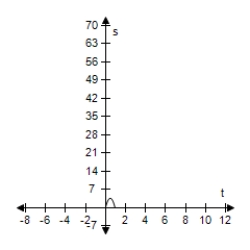
B)s = -16t2 + 15
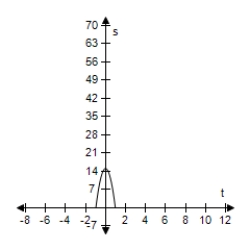
C)s = -16t2 - 15t
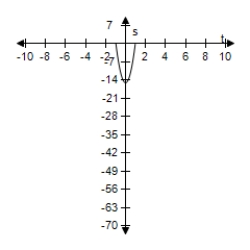
D)s = 16t2 + 15
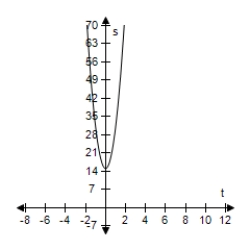
E)s = -16t2 - 15

A)s = -16t2 + 15t

B)s = -16t2 + 15

C)s = -16t2 - 15t

D)s = 16t2 + 15

E)s = -16t2 - 15


Unlock Deck
Unlock for access to all 56 flashcards in this deck.
Unlock Deck
k this deck
35
Find the coordinates of a second point on the graph of a function f if the given point is on the graph and the function is even.
(-x,y)
A)(-x,-y)
B)(x,-y)
C)(-x,y)
D)(x,y)
E)None of the above
(-x,y)
A)(-x,-y)
B)(x,-y)
C)(-x,y)
D)(x,y)
E)None of the above

Unlock Deck
Unlock for access to all 56 flashcards in this deck.
Unlock Deck
k this deck
36
Select the graph of the given function and determine the interval(s)for which f(x)≥ 0.
F(x)= 16 - x2
A)![<strong>Select the graph of the given function and determine the interval(s)for which f(x)≥ 0. F(x)= 16 - x<sup>2</sup> </strong> A) [-4,-4] B) [-4,4] C) [-4,-4] D) [4,-4] E) [-4,4]](https://d2lvgg3v3hfg70.cloudfront.net/TB4590/11ea99db_b714_9c17_94ac_95cef6aa935d_TB4590_00.jpg)
[-4,-4]
B)![<strong>Select the graph of the given function and determine the interval(s)for which f(x)≥ 0. F(x)= 16 - x<sup>2</sup> </strong> A) [-4,-4] B) [-4,4] C) [-4,-4] D) [4,-4] E) [-4,4]](https://d2lvgg3v3hfg70.cloudfront.net/TB4590/11ea99db_b714_9c18_94ac_01e80c8b5b15_TB4590_00.jpg)
[-4,4]
C)![<strong>Select the graph of the given function and determine the interval(s)for which f(x)≥ 0. F(x)= 16 - x<sup>2</sup> </strong> A) [-4,-4] B) [-4,4] C) [-4,-4] D) [4,-4] E) [-4,4]](https://d2lvgg3v3hfg70.cloudfront.net/TB4590/11ea99db_b714_c329_94ac_fbd38df97551_TB4590_00.jpg)
[-4,-4]
D)![<strong>Select the graph of the given function and determine the interval(s)for which f(x)≥ 0. F(x)= 16 - x<sup>2</sup> </strong> A) [-4,-4] B) [-4,4] C) [-4,-4] D) [4,-4] E) [-4,4]](https://d2lvgg3v3hfg70.cloudfront.net/TB4590/11ea99db_b714_c32a_94ac_c92e5c31b42c_TB4590_00.jpg)
[4,-4]
E)![<strong>Select the graph of the given function and determine the interval(s)for which f(x)≥ 0. F(x)= 16 - x<sup>2</sup> </strong> A) [-4,-4] B) [-4,4] C) [-4,-4] D) [4,-4] E) [-4,4]](https://d2lvgg3v3hfg70.cloudfront.net/TB4590/11ea99db_b714_c32b_94ac_4305e3a6debd_TB4590_00.jpg)
[-4,4]
F(x)= 16 - x2
A)
![<strong>Select the graph of the given function and determine the interval(s)for which f(x)≥ 0. F(x)= 16 - x<sup>2</sup> </strong> A) [-4,-4] B) [-4,4] C) [-4,-4] D) [4,-4] E) [-4,4]](https://d2lvgg3v3hfg70.cloudfront.net/TB4590/11ea99db_b714_9c17_94ac_95cef6aa935d_TB4590_00.jpg)
[-4,-4]
B)
![<strong>Select the graph of the given function and determine the interval(s)for which f(x)≥ 0. F(x)= 16 - x<sup>2</sup> </strong> A) [-4,-4] B) [-4,4] C) [-4,-4] D) [4,-4] E) [-4,4]](https://d2lvgg3v3hfg70.cloudfront.net/TB4590/11ea99db_b714_9c18_94ac_01e80c8b5b15_TB4590_00.jpg)
[-4,4]
C)
![<strong>Select the graph of the given function and determine the interval(s)for which f(x)≥ 0. F(x)= 16 - x<sup>2</sup> </strong> A) [-4,-4] B) [-4,4] C) [-4,-4] D) [4,-4] E) [-4,4]](https://d2lvgg3v3hfg70.cloudfront.net/TB4590/11ea99db_b714_c329_94ac_fbd38df97551_TB4590_00.jpg)
[-4,-4]
D)
![<strong>Select the graph of the given function and determine the interval(s)for which f(x)≥ 0. F(x)= 16 - x<sup>2</sup> </strong> A) [-4,-4] B) [-4,4] C) [-4,-4] D) [4,-4] E) [-4,4]](https://d2lvgg3v3hfg70.cloudfront.net/TB4590/11ea99db_b714_c32a_94ac_c92e5c31b42c_TB4590_00.jpg)
[4,-4]
E)
![<strong>Select the graph of the given function and determine the interval(s)for which f(x)≥ 0. F(x)= 16 - x<sup>2</sup> </strong> A) [-4,-4] B) [-4,4] C) [-4,-4] D) [4,-4] E) [-4,4]](https://d2lvgg3v3hfg70.cloudfront.net/TB4590/11ea99db_b714_c32b_94ac_4305e3a6debd_TB4590_00.jpg)
[-4,4]

Unlock Deck
Unlock for access to all 56 flashcards in this deck.
Unlock Deck
k this deck
37
Find the coordinates of a second point on the graph of a function f if the given point is on the graph and the function is even.? ?
A)
B) ?
C) ?
D) ?
E)None of the above
A)
B) ?
C) ?
D) ?
E)None of the above

Unlock Deck
Unlock for access to all 56 flashcards in this deck.
Unlock Deck
k this deck
38
Find the coordinates of a second point on the graph of a function f if the given point is on the graph and the function is odd.? ?
A)
B)?
C)?
D)?
E)None of the above
A)
B)?
C)?
D)?
E)None of the above

Unlock Deck
Unlock for access to all 56 flashcards in this deck.
Unlock Deck
k this deck
39
An object is thrown upward from a height of 8 feet at a velocity of 72 feet per second. Use the position equation s = -16t2 + v0t + s0 to select a function that represents the situation and select the graph of the function.
A) s = -16t2 - 72t + 8 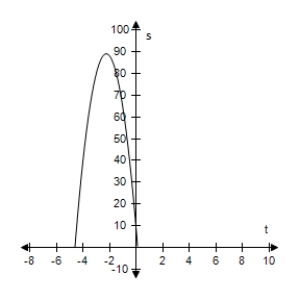
B) s = -16t2 + 72t 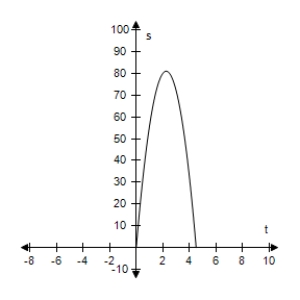
C) s = -16t2 + 72t - 8 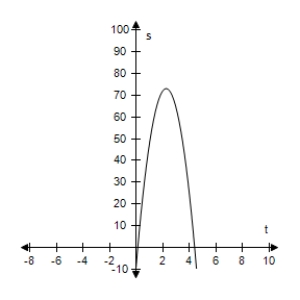
D)s = -16t2 + 72t + 8 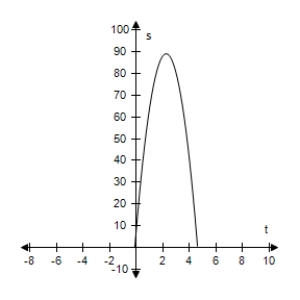
E) s = -16t2 - 72t - 8 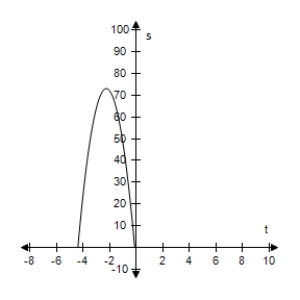
A) s = -16t2 - 72t + 8

B) s = -16t2 + 72t

C) s = -16t2 + 72t - 8

D)s = -16t2 + 72t + 8

E) s = -16t2 - 72t - 8


Unlock Deck
Unlock for access to all 56 flashcards in this deck.
Unlock Deck
k this deck
40
Select the graph of the function and determine whether it is even,odd,or neither.
F(x)= |x + 6|
A)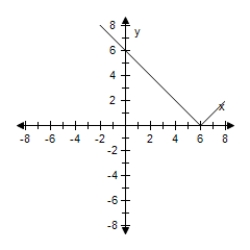 Even
Even
B)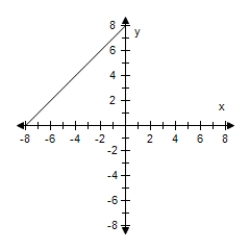 Odd
Odd
C)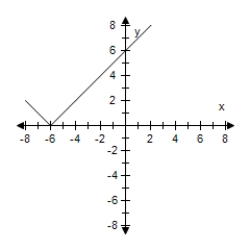 Neither
Neither
D)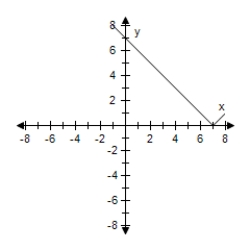 Odd
Odd
E)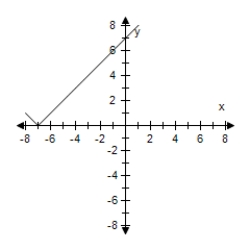 Even
Even
F(x)= |x + 6|
A)
 Even
EvenB)
 Odd
OddC)
 Neither
NeitherD)
 Odd
OddE)
 Even
Even
Unlock Deck
Unlock for access to all 56 flashcards in this deck.
Unlock Deck
k this deck
41
Graph the piecewise-defined function.? ?
A)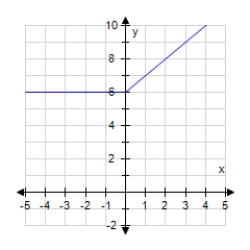
B)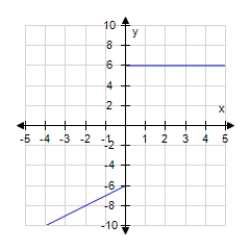
C)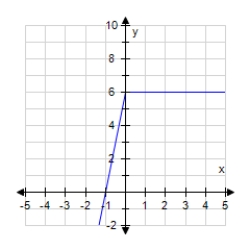
D)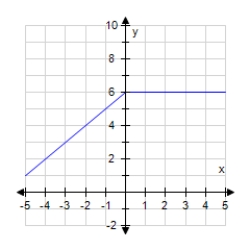
A)

B)

C)

D)


Unlock Deck
Unlock for access to all 56 flashcards in this deck.
Unlock Deck
k this deck
42
The graph of the function is sketched as follows: 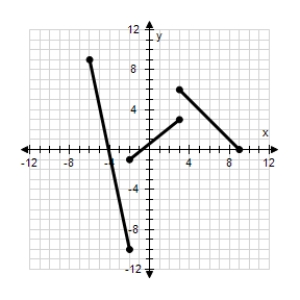
Determine the interval where the function is increasing.

Determine the interval where the function is increasing.

Unlock Deck
Unlock for access to all 56 flashcards in this deck.
Unlock Deck
k this deck
43
Tell where the function is decreasing. 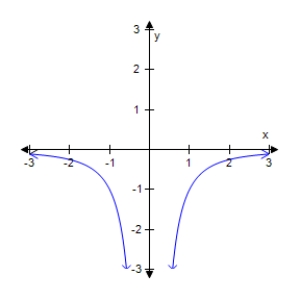
A)always increasing
B)always decreasing
C)(0,∞)
D)always constant
E)(-∞,0)

A)always increasing
B)always decreasing
C)(0,∞)
D)always constant
E)(-∞,0)

Unlock Deck
Unlock for access to all 56 flashcards in this deck.
Unlock Deck
k this deck
44
Use a graphing utility to graph the function and approximate (to two decimal places)any relative minimum or relative maximum values.
A)relative maximum: (2.58,0.39) relative minimum: (7.27,-1.72)
B)relative maximum: (0.39,2.58) relative minimum: (-1.72,7.27)
C)relative maximum: (-1.72,7.27) relative minimum: (0.39,2.58)
D)relative maximum: (7.27,-1.72) relative minimum: (2.58,0.39)
E)relative maximum: (2.58,28.33) relative minimum: (7.27,478.41)
A)relative maximum: (2.58,0.39) relative minimum: (7.27,-1.72)
B)relative maximum: (0.39,2.58) relative minimum: (-1.72,7.27)
C)relative maximum: (-1.72,7.27) relative minimum: (0.39,2.58)
D)relative maximum: (7.27,-1.72) relative minimum: (2.58,0.39)
E)relative maximum: (2.58,28.33) relative minimum: (7.27,478.41)

Unlock Deck
Unlock for access to all 56 flashcards in this deck.
Unlock Deck
k this deck
45
Tell where the function is decreasing.? 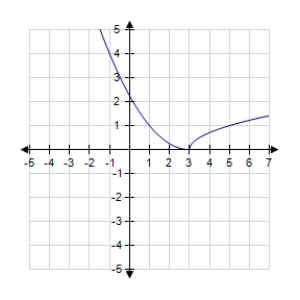 ?
?
A)
B)
C)always increasing
D)always constant
E)always decreasing
 ?
?A)
B)
C)always increasing
D)always constant
E)always decreasing

Unlock Deck
Unlock for access to all 56 flashcards in this deck.
Unlock Deck
k this deck
46
Determine the intervals over which the function is increasing,decreasing,or constant. 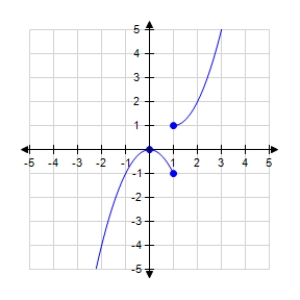
A)?constant on (-?,0) increasing on (0,?)
?
B)increasing on (-?,0), (1,?) descreasing on (0,1)
C)??constant on (-?,1) increasing on (1,?)
?
D)?constant on (-?,1) descreasing on (1,?)
?
E)?constant on (-?,0) descreasing on (0,1)
?

A)?constant on (-?,0) increasing on (0,?)
?
B)increasing on (-?,0), (1,?) descreasing on (0,1)
C)??constant on (-?,1) increasing on (1,?)
?
D)?constant on (-?,1) descreasing on (1,?)
?
E)?constant on (-?,0) descreasing on (0,1)
?

Unlock Deck
Unlock for access to all 56 flashcards in this deck.
Unlock Deck
k this deck
47
Graph the function.? ?
A)![<strong>Graph the function.? y = [ [ 4 x ] ] ?</strong> A) B)? C)? D)?](https://d2lvgg3v3hfg70.cloudfront.net/TB4590/11ea99db_b71a_8ed0_94ac_b54ab0ff447e_TB4590_00.jpg)
B)?![<strong>Graph the function.? y = [ [ 4 x ] ] ?</strong> A) B)? C)? D)?](https://d2lvgg3v3hfg70.cloudfront.net/TB4590/11ea99db_b71a_8ed1_94ac_81f3be61747c_TB4590_00.jpg)
C)?![<strong>Graph the function.? y = [ [ 4 x ] ] ?</strong> A) B)? C)? D)?](https://d2lvgg3v3hfg70.cloudfront.net/TB4590/11ea99db_b71a_b5e2_94ac_bd578bbaca9c_TB4590_00.jpg)
D)?![<strong>Graph the function.? y = [ [ 4 x ] ] ?</strong> A) B)? C)? D)?](https://d2lvgg3v3hfg70.cloudfront.net/TB4590/11ea99db_b71a_b5e3_94ac_418405d07065_TB4590_00.jpg)
A)
![<strong>Graph the function.? y = [ [ 4 x ] ] ?</strong> A) B)? C)? D)?](https://d2lvgg3v3hfg70.cloudfront.net/TB4590/11ea99db_b71a_8ed0_94ac_b54ab0ff447e_TB4590_00.jpg)
B)?
![<strong>Graph the function.? y = [ [ 4 x ] ] ?</strong> A) B)? C)? D)?](https://d2lvgg3v3hfg70.cloudfront.net/TB4590/11ea99db_b71a_8ed1_94ac_81f3be61747c_TB4590_00.jpg)
C)?
![<strong>Graph the function.? y = [ [ 4 x ] ] ?</strong> A) B)? C)? D)?](https://d2lvgg3v3hfg70.cloudfront.net/TB4590/11ea99db_b71a_b5e2_94ac_bd578bbaca9c_TB4590_00.jpg)
D)?
![<strong>Graph the function.? y = [ [ 4 x ] ] ?</strong> A) B)? C)? D)?](https://d2lvgg3v3hfg70.cloudfront.net/TB4590/11ea99db_b71a_b5e3_94ac_418405d07065_TB4590_00.jpg)

Unlock Deck
Unlock for access to all 56 flashcards in this deck.
Unlock Deck
k this deck
48
Find the zeroes of the functions algebraically.? ?
A)
B)
C)?
D)?
E)?no real zeroes
A)
B)
C)?
D)?
E)?no real zeroes

Unlock Deck
Unlock for access to all 56 flashcards in this deck.
Unlock Deck
k this deck
49
Use a graphing utility to graph the function and visually determine the intervals over which the function is increasing,decreasing,or constant.? ?
A)?increasing on (-?,?)
B)descreasing on (-?,1) increasing on (1,?)
C)?increasing on (-?,1) descreasing on (1,?)
D)?descreasing on (-?,?)
E)descreasing on (1,1) increasing on (1,?)
A)?increasing on (-?,?)
B)descreasing on (-?,1) increasing on (1,?)
C)?increasing on (-?,1) descreasing on (1,?)
D)?descreasing on (-?,?)
E)descreasing on (1,1) increasing on (1,?)

Unlock Deck
Unlock for access to all 56 flashcards in this deck.
Unlock Deck
k this deck
50
Use the position equation s = -16t2 + v0t + s0 to write a function that represents the situation and give the average velocity of the object from time t1 to time t2. An object is thrown upward from a height of 38 feet at a velocity of 84 feet per second.
T1 = 1,t2 = 3
A)s = -16t2 + 38t + 84;avg.velocity = 79 ft/s
B)s = -16t2 + 84t + 38;avg.velocity = 125 ft/s
C)s = -16t2 + 38t + 84;avg.velocity = -26 ft/s
D)s = -16t2 + 84t + 38;avg.velocity = 20 ft/s
E)s = -16t2 + 84t + 38;avg.velocity = 40 ft/s
T1 = 1,t2 = 3
A)s = -16t2 + 38t + 84;avg.velocity = 79 ft/s
B)s = -16t2 + 84t + 38;avg.velocity = 125 ft/s
C)s = -16t2 + 38t + 84;avg.velocity = -26 ft/s
D)s = -16t2 + 84t + 38;avg.velocity = 20 ft/s
E)s = -16t2 + 84t + 38;avg.velocity = 40 ft/s

Unlock Deck
Unlock for access to all 56 flashcards in this deck.
Unlock Deck
k this deck
51
Graph the function and determine the interval(s)for which f (x)? 0. ![<strong>Graph the function and determine the interval(s)for which f (x)? 0. f ( x ) = - x ^ { 2 } - 2 x </strong> A) ( - \infty , - 2 ) \cup ( 0 , \infty ) B) ( - 2,0 ) C) [ - 2,0 ] D){-2} E) ( - \infty , - 2 ] \cup [ 0 , \infty )](https://d2lvgg3v3hfg70.cloudfront.net/TB4590/11ea99db_b718_1eb4_94ac_139e884c2a36_TB4590_00.jpg)
A)
B)
C)
D){-2}
E)
![<strong>Graph the function and determine the interval(s)for which f (x)? 0. f ( x ) = - x ^ { 2 } - 2 x </strong> A) ( - \infty , - 2 ) \cup ( 0 , \infty ) B) ( - 2,0 ) C) [ - 2,0 ] D){-2} E) ( - \infty , - 2 ] \cup [ 0 , \infty )](https://d2lvgg3v3hfg70.cloudfront.net/TB4590/11ea99db_b718_1eb4_94ac_139e884c2a36_TB4590_00.jpg)
A)
B)
C)
D){-2}
E)

Unlock Deck
Unlock for access to all 56 flashcards in this deck.
Unlock Deck
k this deck
52
Determine whether the function is even,odd,or neither. ?? ?
A)neither
B)even
C)odd
A)neither
B)even
C)odd

Unlock Deck
Unlock for access to all 56 flashcards in this deck.
Unlock Deck
k this deck
53
Write the height h of the rectangle as a function of x. 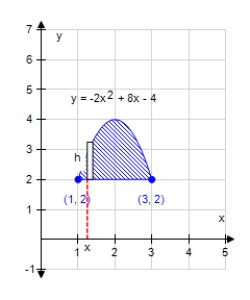
A)?
B)?
C)? .
D)?
E)?

A)?
B)?
C)? .
D)?
E)?

Unlock Deck
Unlock for access to all 56 flashcards in this deck.
Unlock Deck
k this deck
54
Find the graph of the equation.? ?
A)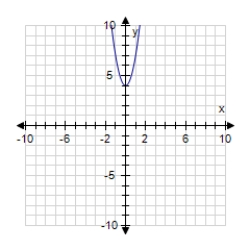 ?
?
B)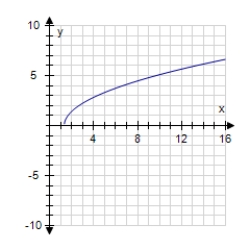 ?
?
C) ?
?
D)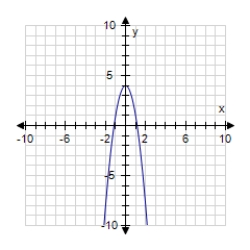 ?
?
A)
 ?
?B)
 ?
?C)
 ?
?D)
 ?
?
Unlock Deck
Unlock for access to all 56 flashcards in this deck.
Unlock Deck
k this deck
55
Use a graphing utility to graph the function and find the zeroes of the function.? ?
A)
B)
C)
D)?
E)no real zeroes
A)
B)
C)
D)?
E)no real zeroes

Unlock Deck
Unlock for access to all 56 flashcards in this deck.
Unlock Deck
k this deck
56
The graph of a function is sketched below. ![<strong>The graph of a function is sketched below. Determine the interval on which the function is decreasing. </strong> A)(-∞,-3] ∩ [-1,∞) B)[-3,-1] C)[-1,-1] D)[1,3] E)(-∞,-3] ∩ [-1,∞) ](https://d2lvgg3v3hfg70.cloudfront.net/TB4590/11ea99db_b719_cb78_94ac_d7673b651470_TB4590_00.jpg) Determine the interval on which the function is decreasing.
Determine the interval on which the function is decreasing.
A)(-∞,-3] ∩ [-1,∞)
B)[-3,-1]
C)[-1,-1]
D)[1,3]
E)(-∞,-3] ∩ [-1,∞)
![<strong>The graph of a function is sketched below. Determine the interval on which the function is decreasing. </strong> A)(-∞,-3] ∩ [-1,∞) B)[-3,-1] C)[-1,-1] D)[1,3] E)(-∞,-3] ∩ [-1,∞) ](https://d2lvgg3v3hfg70.cloudfront.net/TB4590/11ea99db_b719_cb78_94ac_d7673b651470_TB4590_00.jpg) Determine the interval on which the function is decreasing.
Determine the interval on which the function is decreasing.
A)(-∞,-3] ∩ [-1,∞)
B)[-3,-1]
C)[-1,-1]
D)[1,3]
E)(-∞,-3] ∩ [-1,∞)

Unlock Deck
Unlock for access to all 56 flashcards in this deck.
Unlock Deck
k this deck



